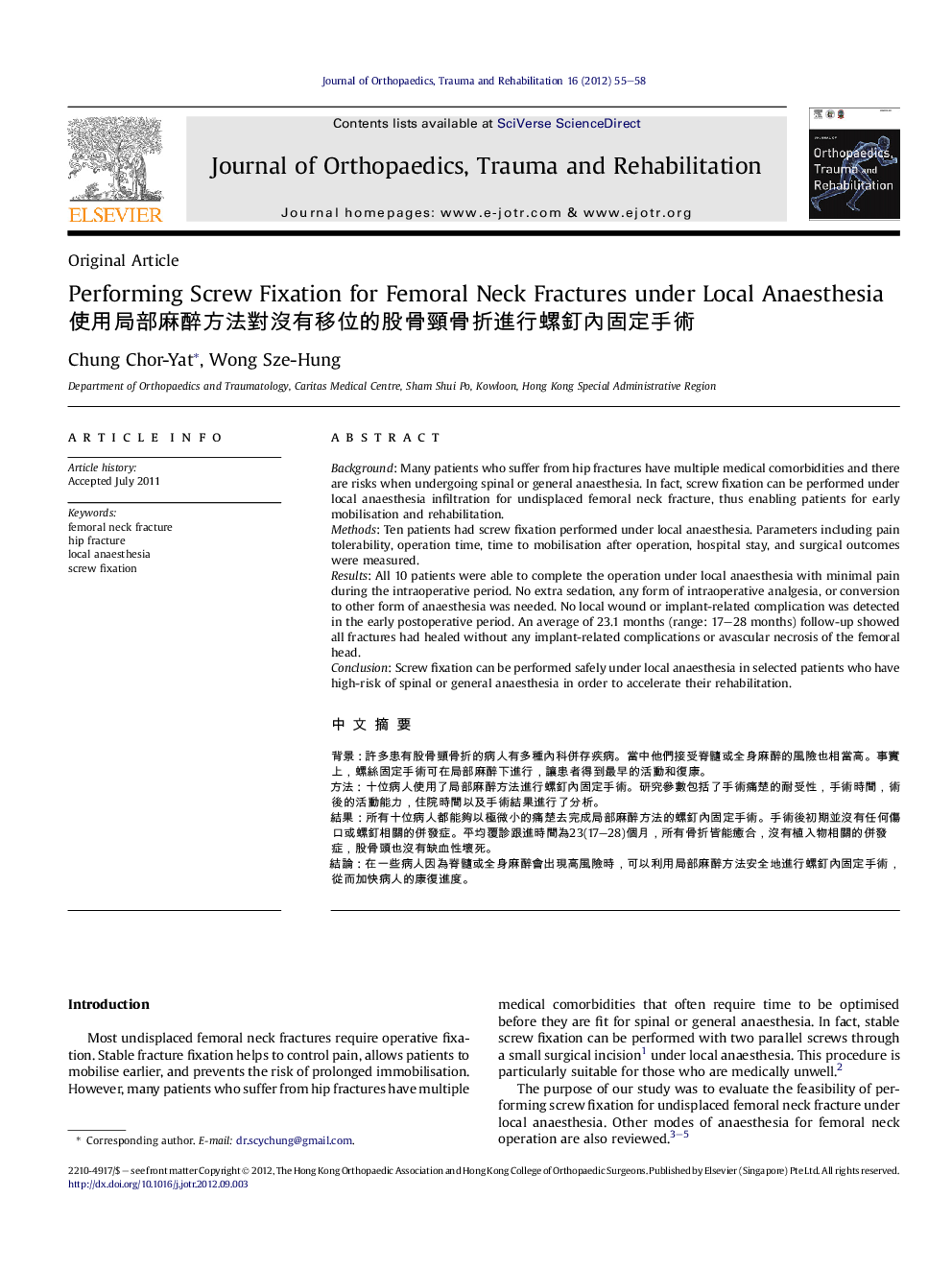| Article ID | Journal | Published Year | Pages | File Type |
|---|---|---|---|---|
| 4072695 | Journal of Orthopaedics, Trauma and Rehabilitation | 2012 | 4 Pages |
BackgroundMany patients who suffer from hip fractures have multiple medical comorbidities and there are risks when undergoing spinal or general anaesthesia. In fact, screw fixation can be performed under local anaesthesia infiltration for undisplaced femoral neck fracture, thus enabling patients for early mobilisation and rehabilitation.MethodsTen patients had screw fixation performed under local anaesthesia. Parameters including pain tolerability, operation time, time to mobilisation after operation, hospital stay, and surgical outcomes were measured.ResultsAll 10 patients were able to complete the operation under local anaesthesia with minimal pain during the intraoperative period. No extra sedation, any form of intraoperative analgesia, or conversion to other form of anaesthesia was needed. No local wound or implant-related complication was detected in the early postoperative period. An average of 23.1 months (range: 17–28 months) follow-up showed all fractures had healed without any implant-related complications or avascular necrosis of the femoral head.ConclusionScrew fixation can be performed safely under local anaesthesia in selected patients who have high-risk of spinal or general anaesthesia in order to accelerate their rehabilitation.
中文摘要背景 : 許多患有股骨頸骨折的病人有多種內科併存疾病。當中他們接受脊髓或全身麻醉的風險也相當高。事實上,螺絲固定手術可在局部麻醉下進行,讓患者得到最早的活動和復康。方法 : 十位病人使用了局部麻醉方法進行螺釘內固定手術。研究參數包括了手術痛楚的耐受性,手術時間,術後的活動能力,住院時間以及手術結果進行了分析。結果 : 所有十位病人都能夠以極微小的痛楚去完成局部麻醉方法的螺釘內固定手術。手術後初期並沒有任何傷口或螺釘相關的併發症。平均覆診跟進時間為23(17–28)個月,所有骨折皆能癒合,沒有植入物相關的併發症,股骨頭也沒有缺血性壞死。結論 : 在一些病人因為脊髓或全身麻醉會出現高風險時,可以利用局部麻醉方法安全地進行螺釘內固定手術,從而加快病人的康復進度。
